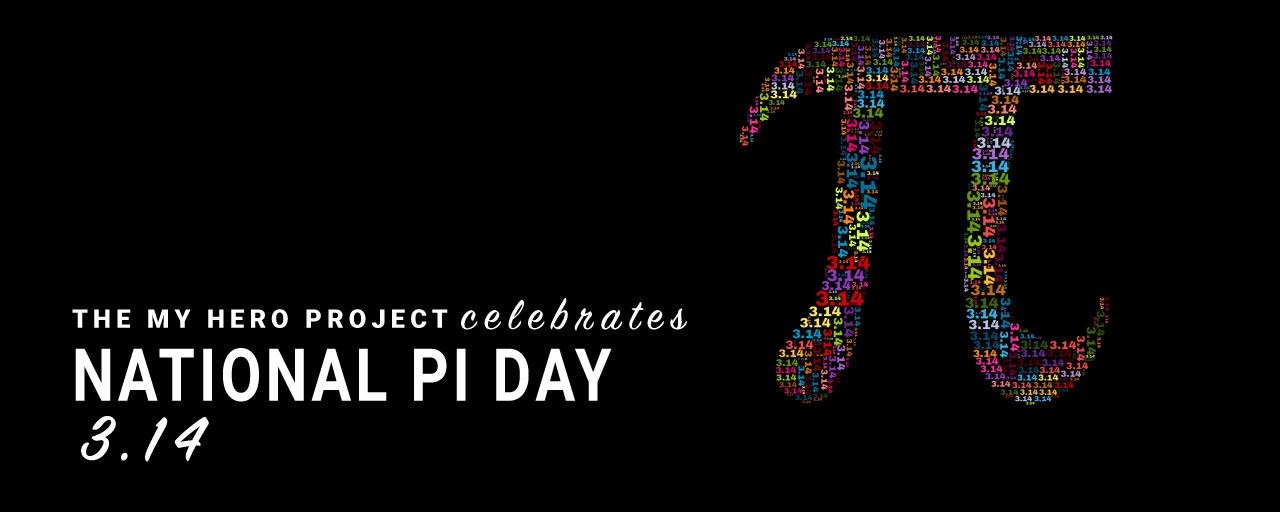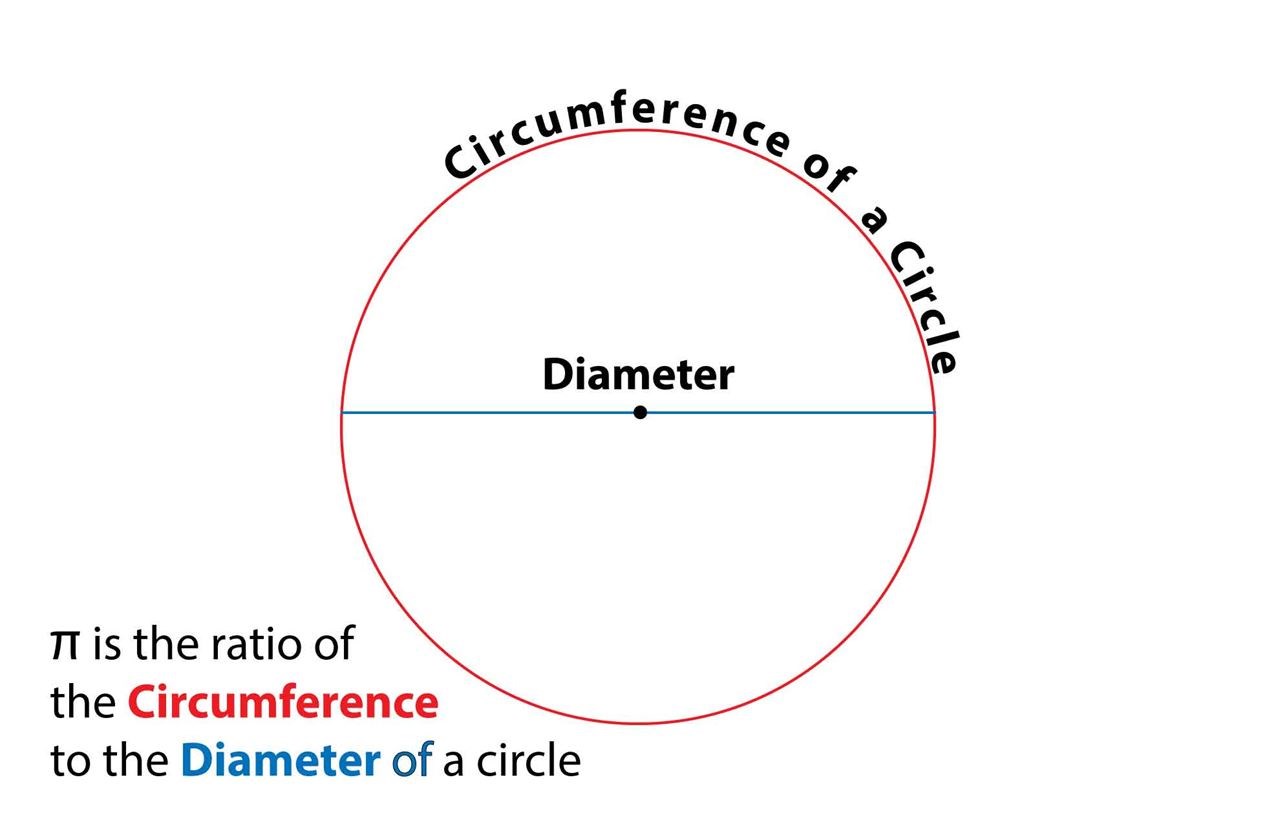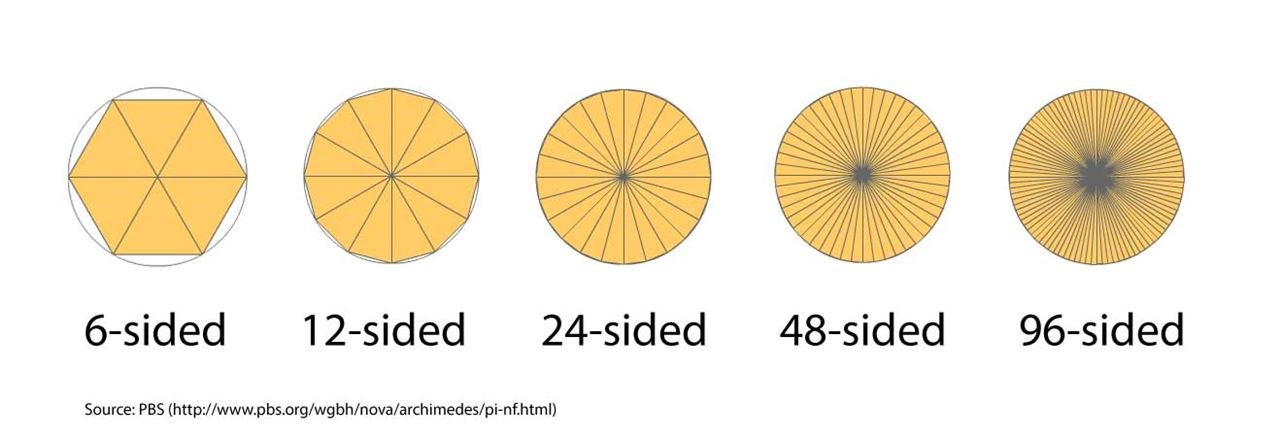
Pi Day is a celebration of the mathematical constant "pi" (or π in Greek)."
Pi Day is celebrated on 3/14 every year because 3, 1, and 4 are the first three digits of pi.
3/14 is also Albert Einstein's birthday, who was born March 14, 1879.
The first celebration was held in San Francisco - and in it mathematicians walked around a circular room eating pie!
Fun Facts about Pi
Pi is the ratio of a circle's circumference (the length of the circle) to its diameter (any straight line that passes through its diameter).
Pi is constant -- that is, it (the ratio) is the same for any circle.
Pi never ends. That is why it is usually represented as "3.14..."
In Proposition 3 of his treatise Measurement of a Circle, Archimedes showed that pi had a value between greater than 22371and less than 227. That is why July 22 (7/22) is called "pi approximation day"!



Archimedes is important to me because some of his studies, inventions, and principles have a base in modern day science, math, physics, engineering, and astronomy.
Advanced Facts about Pi - Egyptians Approxmate Pi
The Egyptians
A circle is a shape, made up of the infinite number of points equidistant from the center of a circle. Unlike a straight line, it is hard to measure a circle! That is the essence of the problem of pi.
Polygons are figures made up of lines, and hence easy to measure. The ancient Egyptians approximated pi by comparing a circle to something they could measure, a polygon.
The evidence for Egyptians approximating pi originates in the Rhind Mathematical Papyrus (1650 BC). Math scholars differ in their interpretations of the text. Here is one reading: In one section, the Egyptian scholar Ahmes poses a problem: if you have a circle with a diameter of 9 khet, what is its area?
Now khet is a measure like inch or feet, so we aren't too worried about that. And, as you can imagine, there are different polygons that can have the same diameter as a circle, such as a square or a polygon.
The area of a square with a side corresponding to the diamter 9 would be d2, or 92 = 81. But the square is bigger than the circle. The scholar Ahmes takes 1/9th of the diameter, and gets the number 8.
He thens squares the number 8 which gives 64. So, 64 is the area of a circle that has a diameter of 9. Modern scholars calculate pi from this, and some believe the Egyptian value for pi was 3.126 -- pretty close to 3.14!

It was the great mathematical genius Archimedes of Syracuse who created a new way of accurately calculating pi.
Archimedes created an algorithm to calculate pi. What's an algorithm? Just a series of steps, like a recipe.
Instead of just doing one calculation, he used the results of the first calculation and repeated the steps to get a more and more accurate calculation of pi. This is called an iterative process.
In the Egyptian example above, we could see that a circle with diameter 8 would be smaller than a square with side 8. We also could see that a circle with diameter 9 is larger than a square with side 8.
Similarly, Archimedes used polygons both inside (inscribed) and outside (circumscribed) a circle to get closer and closer to the area of the circle--and find pi, the ratio of the circumference to the diameter.
He first used a 6-sided polygon, then doubled the number of sides to make a 12-sided polygon. What do you think came next?
He then used a 24-sided polygon, a 48-sided polygon, and finally a 96-sided polygon to get closer to the area of the circle--from which you could find the ratio of the circumference to the diameter. In other words, pi!

by Bill Cherowitzo, Professor Emeritus
http://www-math.ucdenver.edu/~wcherowi/courses/history2/quad.pdf
by Dr. Chuck Lindsey, Associate Professor of Mathematics, Florida Gulf Coast University
https://itech.fgcu.edu/faculty/clindsey/mhf4404/archimedes/archimedes.html
http://www.studentguide.org/all-about-pi-everything-you-need-to-know-then-some/
href="https://en.wikipedia.org/wiki/Measurement_of_a_Circle
by Jason Dyer
https://numberwarrior.wordpress.com/2008/03/05/on-the-egyptian-value-for-pi

Approximating Pi
Simple explanation of how Archimedes approximated pi

Pi Day
Website
Organizer created on 3/13/2018 3:28:20 PM by Xenia Shin
Last edited 3/13/2018 9:17:49 PM by Xenia Shin